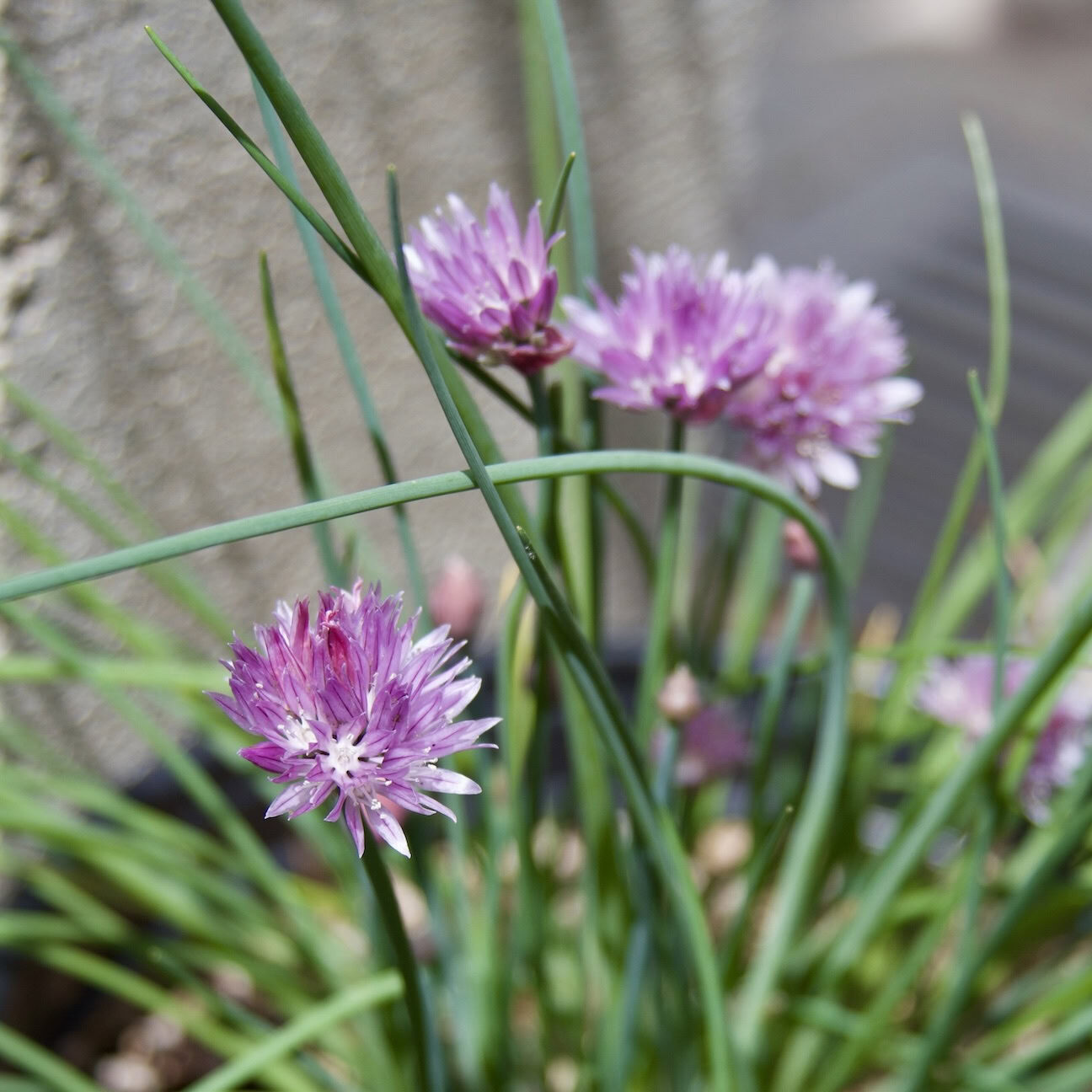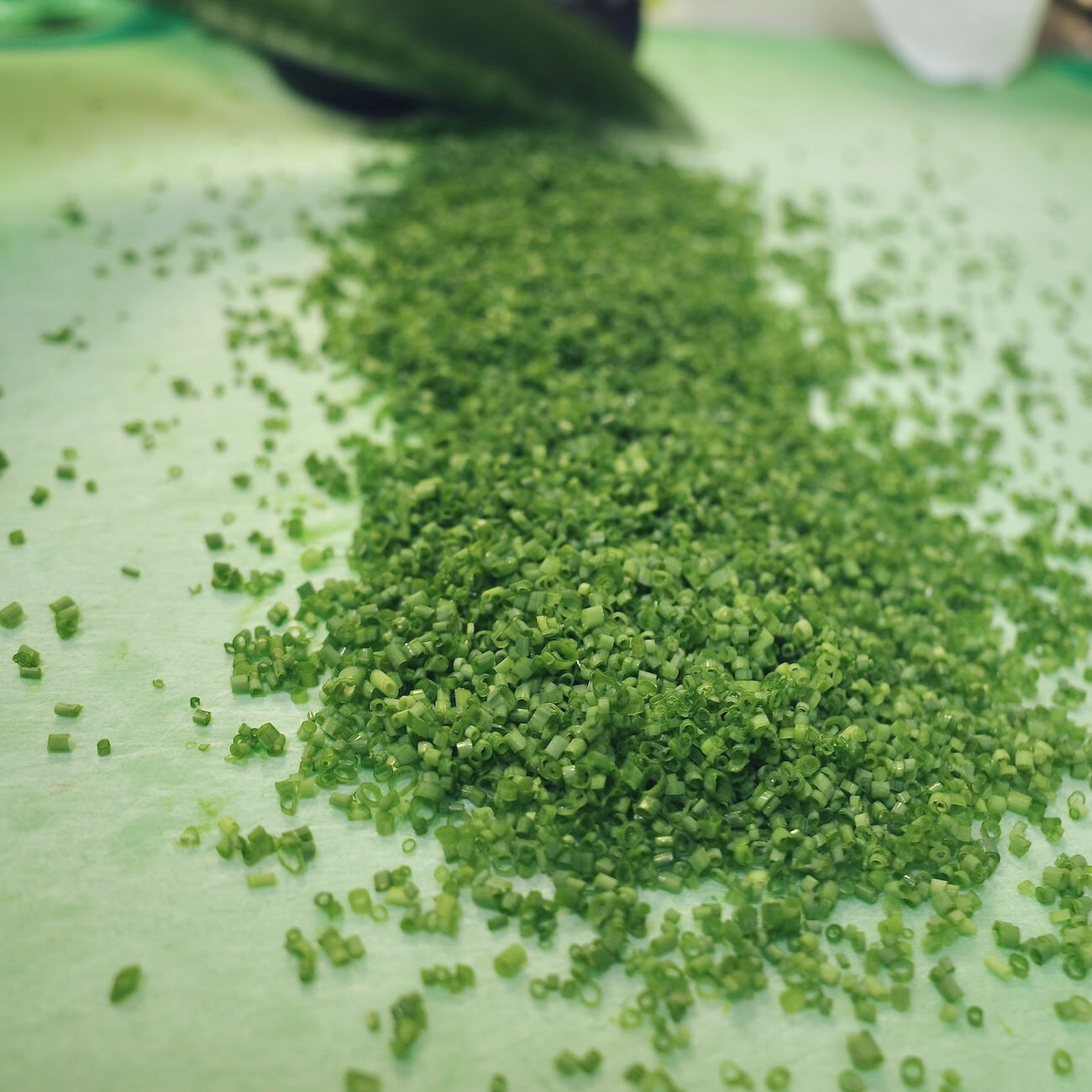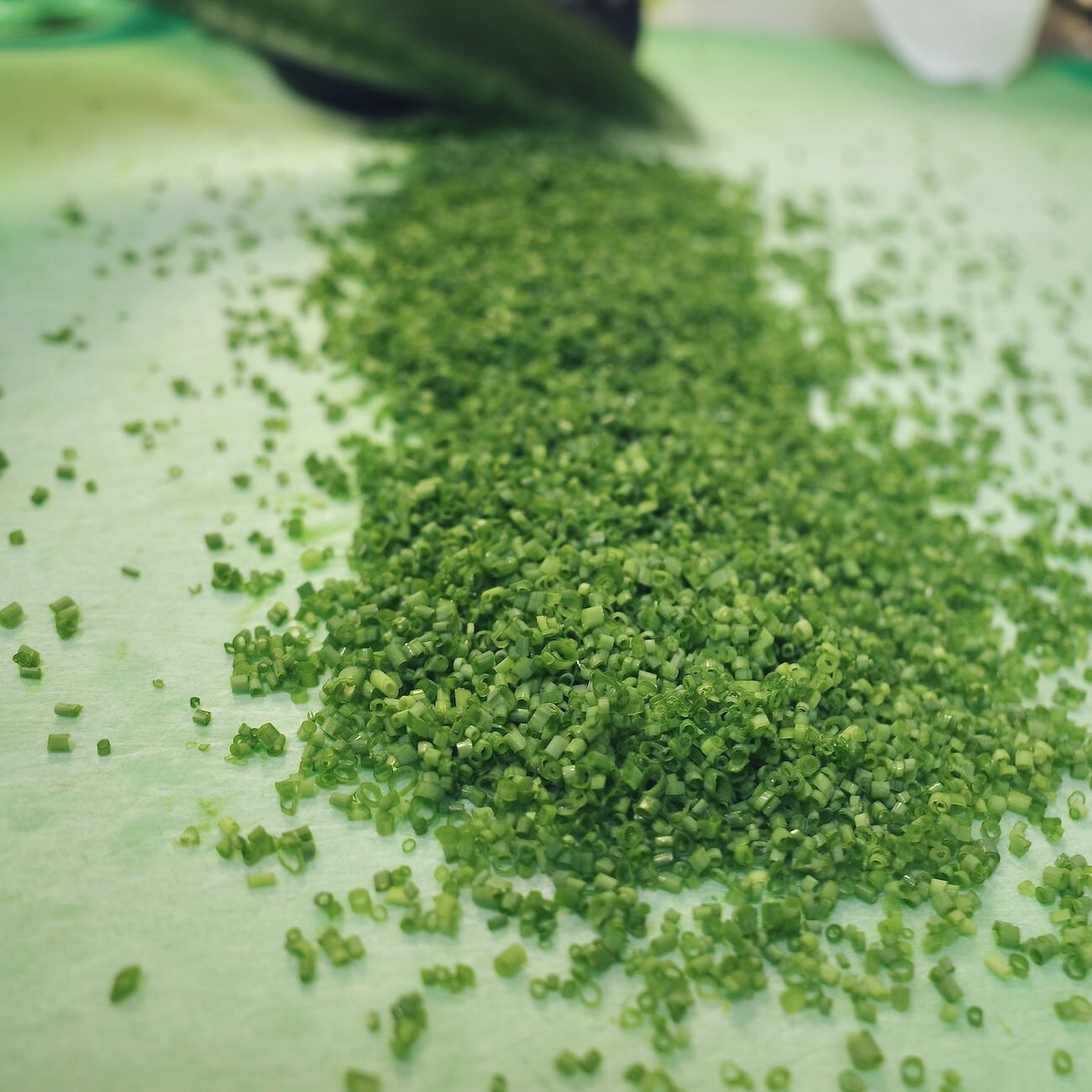Chives
Chives, or onion chives, are the herb derived from the grass-like leaves and flowers of Allium schoenoprasum, a perennial in the onion family. The other main species referred to as "chives" is garlic chives.

REGION OF ORIGIN
Chives have a remarkably vast native range that spans the temperate zones of Europe, Asia, and North America, making them one of the few Allium species considered native to both the Old and New Worlds. Their widespread native presence makes them one of the most globally resilient culinary herbs.
PART & COLOR
The two main species of chives can quickly be differentiated by the shape of their leaves. Onion chives are hollow and tubular, whereas garlic chives are flat and strap-like. Onion chives are a deep green and garlic chives are a lighter, more vibrant green. Both have edible flowers as well. Onion chive flowers are a light pinkish purple with many pedals (left), and garlic chive flowers are white and shaped like a 6-pointed star.
HARVEST
Both chives are perennials that can be harvested throughout the growing season, from spring to fall. The leaves are ready to be cut when they are about 6-8 inches (15-20 cm) tall. The grass-like leaves are cut about an inch above the soil line, which encourages regrowth. For optimal flavor, they are harvested before they flower, unless the flowers are desired.

FLAVOR & AROMA PROFILE
Sharing sulfur compounds with onion itself, chives offer a delicate aroma of mild, fresh, onion-like notes with a very light hint of garlic.
When chopped, the aroma intensifies, releasing a burst of volatile oils. Their flavor is similarly refreshing, light and oniony with a little sweetness and a lingering grassy note. Chives are much less sharp than raw onions, giving them a lot of versatility. You practically need onions to cook, so think of all the possibilities.
CULINARY USES
Chives work well in a wide range of dishes. Their hollow, grass-like leaves are a popular garnish and finishing touch. They can be snipped fresh and sprinkled over soups, salads, or baked potatoes towards the end of cooking, adding a pop of color and a fresh, oniony bite.
They can also be incorporated into compound butters, cream cheese spreads, and dips, their delicate flavor complementing the richness of dairy. Similarly, chives play beautifully with eggs and are often used in scrambles, omelets, and frittatas.



